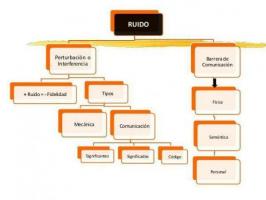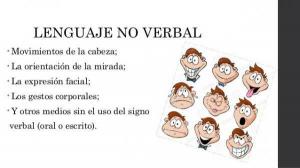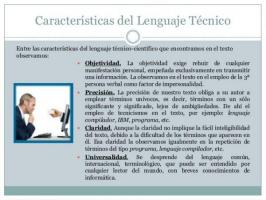Discover ALL the ELEMENTS of COMMUNICATION

Image: Slideplayer
Get ready to meet what are the elements of communication. Thus, we are going to talk about a dynamic and contextual process in which various vital actors are added so that the work reaches a successful conclusion.
But, before entering fully into this lesson from a TEACHER, add that the word communication, which comes from the Latin term "I will communicate”, Originally means sharing something and putting it in common. Therefore, this act requires the fact share information between two or more people, who are able to exchange meanings and impressions with each other, and who can, at turn, to be shared with other people or living beings or even artificial entities, as we see continuation.
But, before going fully into knowing what the elements of communication are, and since we know its more literal meaning, better to know a little more about this act so human and natural that, now, can also be artificial.
Communication is a continuous and dynamic process which is made up of a series of elements:
- Transmitter
- Message
- Receiver
- Context
- Channel
- Code
Although others such as noise and feedback may intervene, as we will see shortly.
For the communicative act to occur, a language must be found that can be presented in various formulas, that is, spoken and written (as is the case at hand at this time), which is considers verbal, or by means of signs, gestures or sounds, among others, which is considered as non verbal.
Thus, during the communicative process, a series of steps is followed that lead to a sender to transmit an encrypted message to its receiver, who must receive it, decode it and understand it.
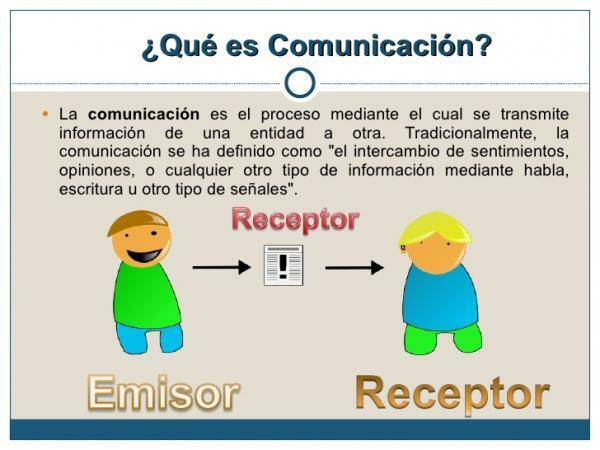
Image: Slideshare
And now we are going to discover what are the elements of communication. Once we know the process, it is the opportunity to learn in depth what elements it is composed of:
Transmitter
The transmitterit is the subject who shares the message. This source can be an inanimate or animate entity, and which requires a single quality, which is capable of supplying information through some type of channel that reaches a receiver.
Receiver
The receiver can also be animate or inanimate. In this case it is the person in charge of receiving the message sent by the sender. It decodes it once it receives it. Therefore, it can be an individual, a living being, or even an object or artifact. Be that as it may, it is necessary for the receiver to share the context, the codes, or the frame of reference with the sender. Otherwise, he will not be able to decode the message.
Message
This is defined by the information that the issuer communicates to the receiver. In this sense, they can be various types of information, such as data, feelings, ideas, etc. As we have said, it must be encoded in such a way that the receiver is capable of receiving and decoding it. For this, symbols and signs must be used that allow the individual who receives it to interpret it successfully.
Context
The contextmake reference to environment surrounding the sender and receiver. In other words, the place where the information exchange takes place receives this name. So it can be any commonplace, which does not necessarily have to facilitate such an exchange.
Code
The symbols, rules and signs which, combined, structure a message, they receive the code name. This can be written or spoken language, sounds like a dog snorting or barking, or even signs, warnings, etc.
The code needs a encoding process, which is the task of the sender of the message, as well as one of decoding, which the receiver is in charge of. That is, only if it is common, or at least contains enough common signs, will you be able to achieve successful communication. That is, two people who speak the same language can communicate perfectly. If, on the other hand, the message is thrown by a human towards a dog, it may not understand all the signs, but it does understand enough to decode part of the message.
Channel
The communication channelit is the medium by which it is transmitted and received a message. They can be personal, verbal or non-verbal, interpersonal, written, etc. Include any medium, such as paper, television, a telephone, etc.

Image: Elements of Communication
There are also other elements of communication that we need to include in this lesson. They are as follows:
Noise
Noise is the interference that causes or can cause the transmission between transmitter and receiver to be not smooth or even impede communication. Thus, its source can be diverse, from an electronic device that does not work well to very loud music. Here we discover the different types of noise in communication that may exist.
Feedback
We can also consider feedback within the communicative elements, explained as the response of the receiver to the sender once the message is received and decoded.
The context It is also part of the elements of communication and, in fact, it is extremely important. This element greatly affects communication and refers to the time and place in which it is occurring. In the communicative context there is also a highly important aspect such as the culture of the sender and receiverSince if both share the same culture, there will be aspects that will be easier to understand than if they are from different cultures.
Therefore, if we have to define the communication context we would say that it is about the situation in which the communicative act takes place and that influences their very understanding. The where and when are very influential for communication to be really effective and for the message to really reach the receiver in a clear way.
Example of communicative context
A context example would be to speak of the corrals in the 16th century, a name that used to refer to the corrals of comedies, the places in which represented plays or talk about corrals in the nineteenth century when it only refers to a place on a farm where they have to animals. If a person from the Golden Age were to speak to a current person, communication could fail because they do not share the same communicative context and understanding could be impaired.
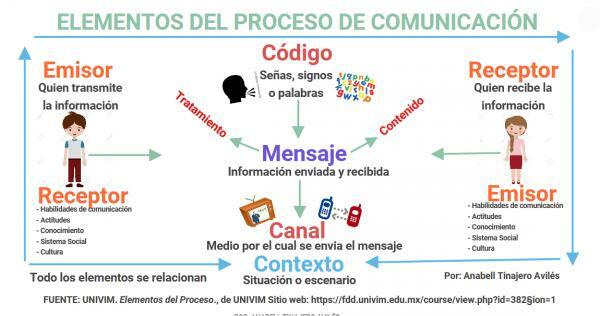
Image: Alfabeta School
To finish understanding clearly and concisely what the elements of communication are, below we are going to leave you some examples that will allow you to put your knowledge into practice and finish better understanding this lesson. Examples of communication elements are as follows:
Example 1: Language class
We are in Spanish language class. The teacher is giving the lesson.
- Issuer: the teacher
- Receiver: students
- Context: the classroom
- Code: the language used by the teacher
Example 2: Conversation on WhatsApp
We continue with the examples of the elements of communication to explain a very common communicative situation today: a conversation on WhatsApp.
- Sender and receiver: they alternate. When you write, you are the sender and when you read, you are the receiver.
- Context: digital environment and the WhatsApp program
- Code: Written and can include emoticons as well as communication signs
Example 3: Telephone conversation
We end up offering another example that is also very common: a conversation over the phone.
- Issuer: the one who speaks
- Receiver: the listener (roles can be exchanged)
- Channel: the phone line
- Code: the language used to speak
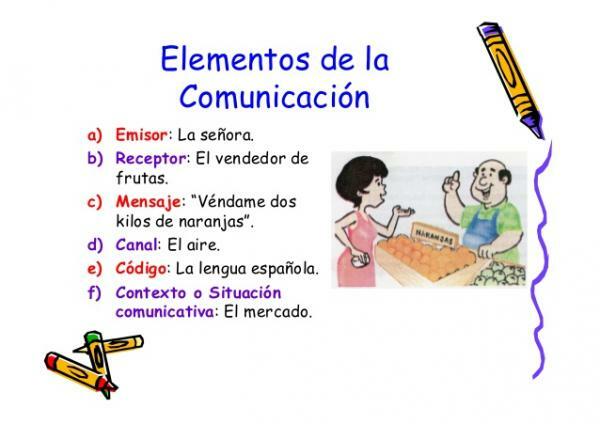
Image: Slideshare

